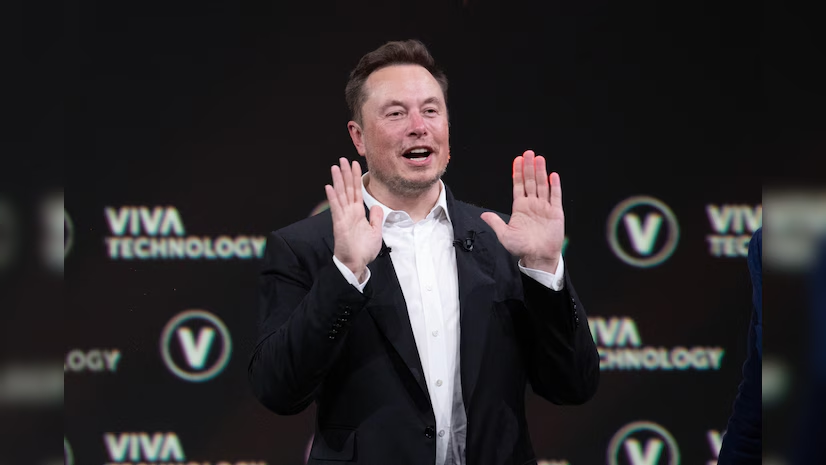Elon Musk’s vision for Mars colonization gains momentum with Donald Trump’s return to the White House, potentially shifting NASA’s focus from the Moon to the Red Planet. This Mars-first agenda could accelerate uncrewed missions within the decade, with SpaceX leading the way.

Elon Musk’s Mars Dream Gains Momentum with Trump’s Return to the White House
The election of Donald Trump as President is expected to significantly impact U.S. space policy, giving a boost to Elon Musk’s vision of establishing human settlements on Mars. According to Reuters, insiders familiar with the administration’s plans suggest that the incoming leadership is set to prioritize Musk’s Martian ambitions, shifting focus from the Moon to the Red Planet. This shift could mean a more aggressive Mars exploration timeline, pushing uncrewed missions within this decade and marking a bold, albeit riskier, path forward.
Prioritizing Mars: A Shift in Space Policy
Trump’s administration is considering a pivot in NASA’s current Artemis program, which initially aimed to return astronauts to the Moon as a gateway to Mars. Instead, under Trump’s leadership, the goal may focus more directly on sending missions to Mars itself, bypassing the Moon as a central step. This move could mark a major change from recent NASA goals, representing a more ambitious and potentially riskier approach in deep space exploration. With Musk’s vocal support for Trump’s campaign, along with a reported $119 million donation, he has successfully elevated his Mars colonization goals within the White House’s space policy discussions.
The alignment of Trump’s administration with Musk’s vision reflects a shared belief that the Moon is better suited as a “launching pad” to Mars, rather than an endpoint of human exploration. Trump’s own comments on space have supported this idea, and his administration is expected to push NASA toward setting firmer, nearer-term goals for Mars missions. If this shift occurs, it would mean a major restructuring of the Artemis program, with a heavier reliance on Mars-focused efforts instead of a sustained lunar presence.
Paving the Way for Private Space Companies
Trump’s administration is predicted to favor private sector-led space exploration, which could include greater reliance on SpaceX and its advanced technologies, like the Starship rocket. This private-public model may move away from NASA’s traditional cost-plus contracting approach—an arrangement where contractors are reimbursed for costs plus additional profit—and instead use fixed-price contracts. Such a strategy can potentially lower costs and streamline timelines, but it could also challenge established NASA programs, especially the Space Launch System (SLS) rocket.
SpaceX’s role could be pivotal in the shift toward Mars. As a leading player in space exploration, SpaceX has already made significant strides with the Starship rocket, which Musk envisions as the primary vehicle for Mars missions. Musk’s timeline for Mars is ambitious: he aims to land Starship on Mars by 2026 and launch a crewed mission within four years after that. While industry experts have expressed skepticism about these timelines, Trump’s backing may add momentum, increasing the likelihood of an uncrewed Mars landing by Starship during his term.

Potential Benefits and Risks of an Accelerated Mars Mission
A Mars-first strategy could propel the U.S. into an era of space exploration with a focus on deep space, increasing the nation’s presence in the final frontier. However, prioritizing Mars over the Moon carries inherent risks. Mars missions are more complex and come with a higher level of uncertainty in terms of technical feasibility, cost management, and mission safety.
Former NASA official Doug Loverro, who served under the Trump administration, predicts a “more realistic Mars plan” that prioritizes establishing Mars as the main goal. However, this accelerated timeline also raises concerns about the financial and technical challenges that come with such an endeavor. Mars missions require long-duration travel, advanced life support systems, and solutions for radiation exposure—all of which remain major technical hurdles. Additionally, moving away from the Moon as a testing ground may impact mission readiness for Mars by skipping critical testing opportunities close to Earth.
Increased private sector involvement could bring faster innovation, cost savings, and groundbreaking technology. However, experts also caution that relying heavily on private companies like SpaceX may place added pressure on firms to meet accelerated timelines, potentially leading to higher failure rates and a riskier path to success.
The Trump Administration’s Vision for Space
As Trump’s transition team prepares to take office, their anticipated support for a Mars-focused agenda signals a potential new era for American space policy. NASA and the space industry are closely watching, awaiting further details on how the Trump administration’s policies will shape the future of U.S. space exploration. Should the shift toward Mars come to fruition, the United States may soon be more focused on preparing for interplanetary missions rather than lunar exploration.
Trump’s prioritization of space policy aligns with his administration’s broader interest in advancing American leadership in science, technology, and exploration. A focus on Mars could strengthen U.S. standing in the global space race, encouraging technological advancements in robotics, AI, and life-support systems. It could also open up new economic opportunities for private industry, which stands to benefit from increased federal support for Mars-focused initiatives.
What’s Next for NASA and SpaceX?
The anticipated shift in priorities has industry experts contemplating the future structure and funding of NASA’s programs. Current funding is largely allocated toward the Artemis program, with an emphasis on lunar exploration and the development of the SLS rocket. However, a Mars-centered strategy may divert funding away from these lunar objectives and instead channel resources toward Mars-specific projects.
SpaceX, as a private company, has already made significant strides in reducing launch costs and pioneering reusable rocket technology. The Starship rocket, Musk’s flagship for Mars, is designed to be a fully reusable spacecraft capable of carrying large payloads to deep space destinations. This ambitious project remains in development, and the success of Starship will be key to making Musk’s Mars vision a reality. If Trump’s administration directs funding and policy support toward Mars-focused missions, SpaceX could see an increase in government contracts and partnerships aimed at preparing for Mars.
Potential Challenges for a Mars-Focused Agenda
While the Trump administration’s support for Musk’s Mars ambitions could accelerate plans, there are still several challenges to consider. Mars missions face unique technical obstacles, such as developing reliable life support for long-duration missions, dealing with high radiation levels, and ensuring safe reentry into Mars’ thin atmosphere. Additionally, cost overruns are a persistent concern with deep space missions, and a more aggressive timeline may lead to increased financial pressure on NASA and its contractors.
The pivot to Mars could also mean delays or cancellations for lunar initiatives that are currently underway. The SLS rocket, which has been in development for years and has already faced substantial delays, may see reduced funding or priority under a Mars-first policy. Furthermore, some scientists and engineers argue that the Moon is a critical stepping stone for Mars missions, as it offers opportunities to test technologies and operations relatively close to Earth.

An Era of Ambitious Space Exploration Ahead
If Trump’s administration follows through on its Mars-focused approach, it could mark a turning point in space exploration, making Mars the primary goal for human spaceflight. The potential for a Starship uncrewed mission to Mars during Trump’s term would be a groundbreaking achievement, moving humanity one step closer to interplanetary colonization.
With support from Trump’s administration, Musk’s Mars dream is closer to reality than ever. The alignment between Musk and Trump could catalyze a new age of exploration, pushing the boundaries of what’s possible for humans in space. The space industry—and the world—will be watching as this ambitious agenda unfolds, waiting to see if the United States will indeed take the giant leap from the Moon to Mars.
Stay tuned to Club4Celebs for more updates.


